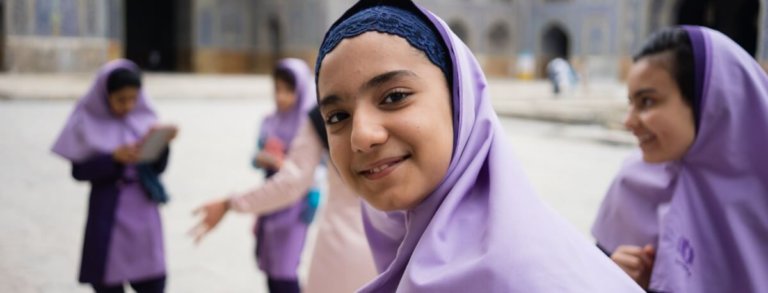
The school uniforms debate today often includes discussions on whether clothing rules and regulations should reflect a student’s cultural and religious practices.
In some places, like the very-secular country of France, head veils have long been a source of heated political controversy. In others like the Victorian region of Australia, public officials are weighing up the impact of allowing a Sikh student to wear a turban.
When choosing a school, parents would do well to note several trends from these reports:
1. Freedom of religion vs Schools’ right to set standard of school uniforms
In 2017, a Sikh boy in Melbourne was refused entry to Melton Christian School because he wore a patka, a smaller version of the turban worn by Sikh adults. While the school accepts children of all faiths, it is under the disclaimer that “they don’t wear clothing that promotes other religions” as it does not “want children standing out as different”.
The Victorian Administrative and Civil Tribunal (VCAT) later found that the school had breached the Equal Opportunity Act. While the Act prohibits discrimination on religious grounds, it also gives a wide exemption for schools in relation to school uniforms. Following the proceeding, it amended its school uniform policy to allow exceptions where genuine medical or religious grounds exist.
Central to cases like the above is the tension between schools’ aim for inclusivity (so students “don’t stand out”) and their accommodation of their students’ cultural and religious needs. Similar school uniform debates of this kind can be found in Kenya and the UK. On a religiously diverse, multicultural campus, which is the case for many international schools, a school that does not balance these two elements properly is one that is unhelpful, and arguably, should be avoided.
2. The school uniforms debate with state intervention
The prime example of state intervention in the school uniforms debate can be seen most prominently in France. A different take from the Australian case above, the debate here is one that involves the century-old tradition of secularism in public schools and goes as far back as 1989, when three Muslim school girls were suspended for refusing to remove their headscarves in class in a middle school in Creil, a suburb of Paris.

In France, school uniforms in public schools must not show any religious symbols. Source: Jean-Pierre Muller/AFP
In 2004, the state banned all conspicuous religious symbols from public primary and secondary schools with a veil “in the spirit of secularism”. It forbids the wearing of any “ostentatious” religious articles, including the Islamic veil, the Jewish kippa and large Christian crosses. But many consider it Islamophobic as it targets Muslim women’s headscarves, or hijab, headgear considered compulsory by many Muslims.
3. More inclusivity
In a reversal of the above examples, there are schools taking a more inclusive stance on their school uniforms policy. One high school in Winnipeg, Canada ordered custom hijabs for its school athletes, the second school in Canada to have done this. This was shortly after the International Basketball Federation overturned its ban on hijabs, turbans, yarmulkes and other religious headgear during games.
Winnipeg high school orders custom hijabs for Muslim athletes https://t.co/Rf77TwEwOw pic.twitter.com/aAcYIhXmp3
— HuffPost Canada (@HuffPostCanada) October 17, 2017
Referees at the Canadian high school’s basketball games had often questioned whether the safety pin in her normal hijab would be safe to play. That spurred one student to look for one that’s easier to wear and would encourage Muslim women who think they can’t get involved in sports because of their attire.
Following the Christchurch terror attack in New Zealand, a private Anglican school in Epsom revised its school policy banning overt religious items after a teacher called its hijab ban discriminatory.
“After undertaking careful and considered discussion and receiving community feedback, we believe a revision of our uniform policy is appropriate,” the statement by its principal and board chair said, as reported by TVNZ.
“We are a compassionate school and are always open to discussion with our families and students around our uniform policy.
“We believe that now is an appropriate time to revise our policy to allow for the wearing of the hijab by our Muslim students who wish to do so.”







